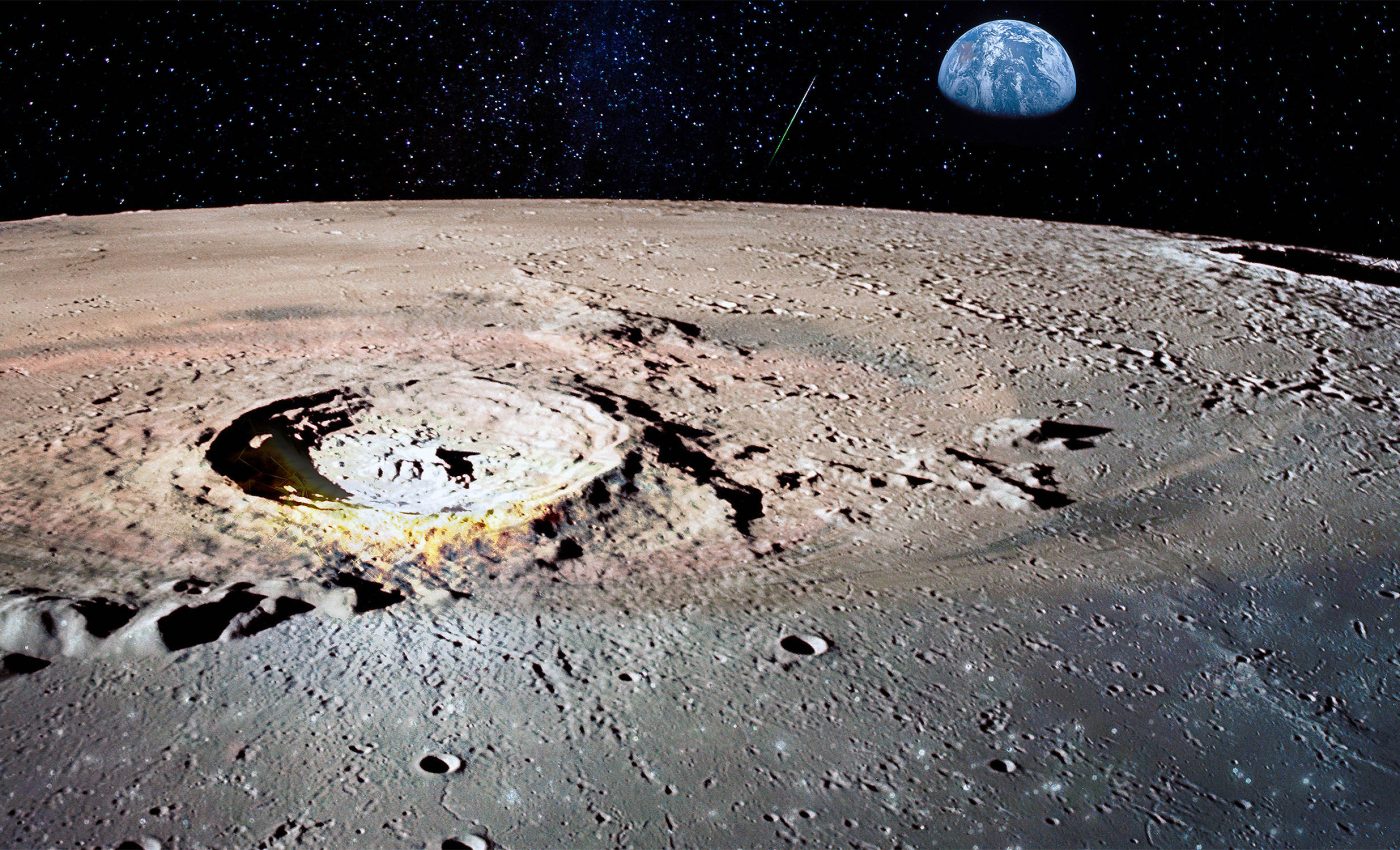
The Moon had active volcanoes just 120 million years ago
Ever looked up at the night sky and pondered the mysteries the Moon holds? Scientists have been doing just that for decades, and the latest discoveries about the Moon’s volcanoes are nothing short of fascinating.
Peek into the Moon’s volcanoes
The Moon has experienced extensive volcanic activity in its past, evidence of which can be traced geologically. But the timeline of these volcanic episodes remained in the realm of the unknown until recently.
Now, a team of dedicated researchers led by Prof. LI Qiuli at the Institute of Geology and Geophysics of the Chinese Academy of Sciences (IGGCAS) has brought forth an interesting revelation.
By examining lunar soil samples collected by the Chang’e-5 mission, Prof. LI Qiuli’s Lab identified three volcanic glass beads.
Intriguingly, these beads were formed 123±15 million years ago, making them the most recent specimens of lunar volcanism confirmed by radioisotope dating. This find was spotlighted in a recent publication in Science.
Echoes of the Moon’s volcanoes
The dating of lunar volcanic basalt samples fetched by the Apollo and Luna missions, or that have arrived on Earth via lunar meteorites, suggested that lunar basaltic volcanism endures until approximately 2.9–2.8 billion years ago.
However, a more recent analysis of lunar samples from the Chang’e-5 mission implies that basaltic volcanism lingered on until at least 2.0 billion years ago.
Remote observations
Remote sensing observations hint at the possibility of even younger volcanism during the late Copernican era (less than 0.8 billion years ago) on the Moon. But without precise dating, these suspicion-filled observations remain just that.
An additional challenge arises from the fact that the proposed late-Copernican mare basalt extrusions are distributed over limited areas, and no samples have been obtained from these regions.
Deciphering the clues
Eruptions of gas-enriched magma can create magma fountains, dropping submillimeter glass bead deposits over broad regions.
Over time, these beads can be further relocated across the lunar surface due to impact. These tiny volcanic glasses could remain undetected in existing samples.
WANG Biwen, a graduate student under the guidance of Profs. LI Qiuli and HE Yuyang, along with postdoctoral researcher ZHANG Qian, scrutinized approximately 3000 glass beads in lunar soil samples.
They identified three volcanic glass beads based on their textures, primary and trace-element compositions, and in-situ sulfur isotope analyses.
Interestingly, the δ34S values of the three volcanic glass beads do not conform to impact glass beads’ values.
This divergence gives researchers a selection criterion for distinguishing volcanic glasses from impact glasses. Using uranium-lead dating, the team concluded that these volcanic glass beads were formed 123±15 million years ago.
Implications of discovering younger volcanism
The discovery of younger volcanic material on the Moon changes how we think about its geological history.
We used to believe the Moon had cooled down and was mostly inactive, but finding recent volcanic glass beads shows that volcanic activity might have continued longer than we thought.
This new insight opens up exciting questions about the Moon’s heat and volcanic history and what it could mean for future eruptions.
Understanding these processes not only helps us learn more about the Moon but also gives us clues about other planets and how they formed over time in our solar system.
Profound implications for lunar history
The radioisotope dating of these three Chang’e-5 volcanic glass beads sheds light on 120-million-year-old volcanoes on the Moon.
This suggests that small celestial bodies, such as the Moon, may retain sufficient heat to foster internal vitality until quite far in their life span.
These findings offer new constraints for geophysical models on the Moon’s deep interior’s thermal history.
This awe-inspiring study was a joint venture with Nanjing University and the State University of New York (SUNY) at Albany.
So, the next time you gaze at the moonlit sky, remember, there’s more than what meets the eye. Every celestial body out there has a gripping tale to tell, and there’s no end to the mysteries we can unravel when science leads the way.
—–
It was supported by several esteemed organizations, including the National Natural Science Foundation of China, the Chinese Academy of Sciences, the Institute of Geology and Geophysics of the Chinese Academy of Sciences, and the China National Postdoctoral Foundation. The China National Space Administration provided the samples used in this study.
The study is published in the journal Science.
—–
Like what you read? Subscribe to our newsletter for engaging articles, exclusive content, and the latest updates.
Check us out on EarthSnap, a free app brought to you by Eric Ralls and Earth.com.
—–













